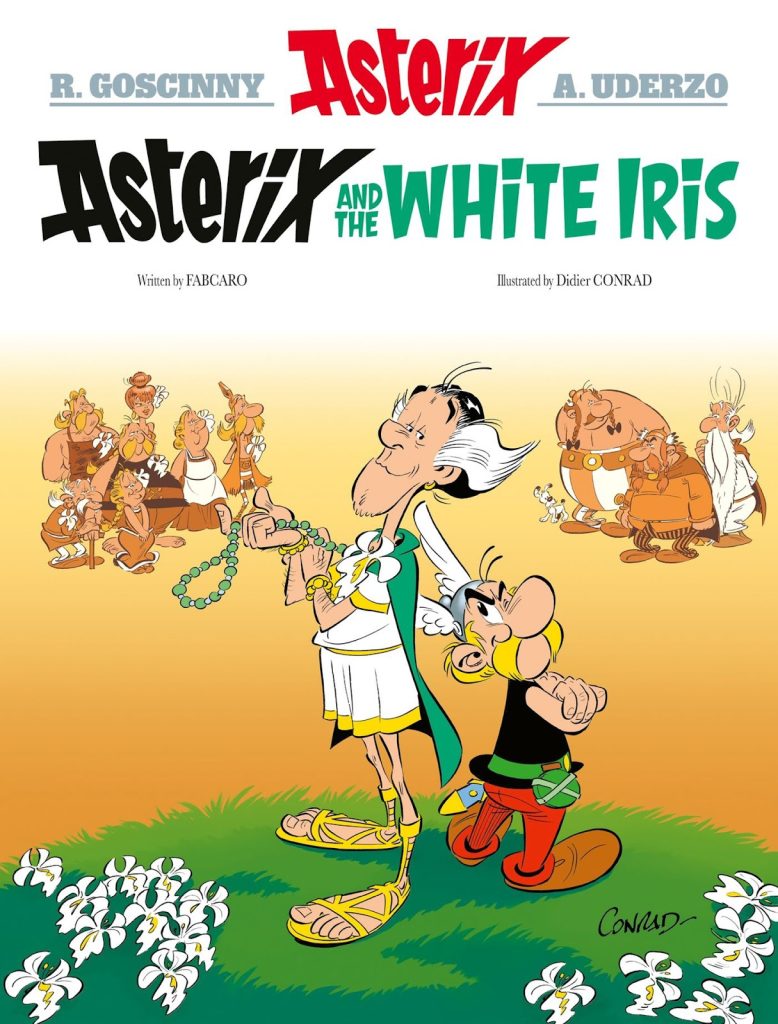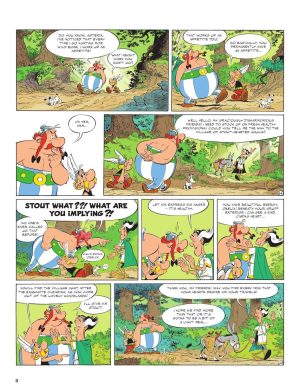Review by Frank Plowright
As stated at the start of every Asterix story, there’s only the single village in Gaul that’s managed to hold out against the Roman Empire in 50BC, and that galls with Julius Caesar, who’s come up with numerous plans to capture it over the years, all of which have failed. However, with a morale crisis among Roman troops, perhaps the positivity techniques recommended by Isivertuus will turn the tide.
New writer Fabcaro (Fabrice Caro) uses Isivertuus in much the same way Rene Goscinny used the Roman Agent to sow discord among the Gaullish villagers, except via dampening their natural inclinations through positive reinforcement of other qualities. Before long the Gauls are able to see two sides to every story, which is about to weaken them. However, that’s only the opening segment of a wide-ranging adventure encompassing multiple satirical references. Poor train services, contemporary art, and the patronising nature of big city residents are all commented on in passing, while the reaction of Obelix to vegan cuisine is priceless.
With Didier Conrad now illustrating his sixth Asterix adventure, there’s extremely little deviation from the template laid down by series co-creator Albert Uderzo. Busy panels, beautifully expressive characters and widescreen backgrounds are found on every page, and Conrad never oversells the jokes.
Ah yes, the jokes. For all the satire, the stand or fall test of an Asterix book is how often you laugh out loud. Fabcaro has that covered from audaciously clever wordplay, some naturally down to translator Adriana Hunter, beautifully set-up scenes coming to fruition, and the character based humour such as Obelix’s outrage on the sample page.
The previous few Asterix outings have been inconsistent, ranging downwards from very good, but Asterix and the White Iris is the real deal, a story that can rank with Rene Goscinny’s work.





